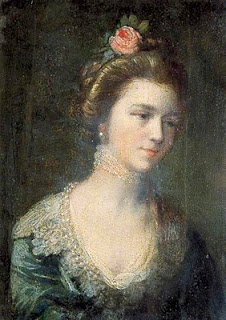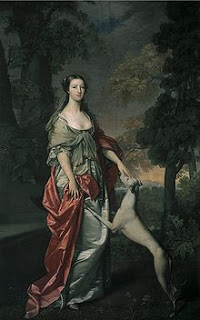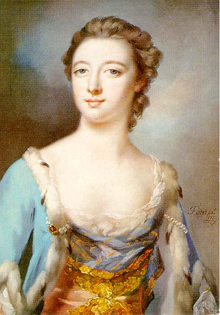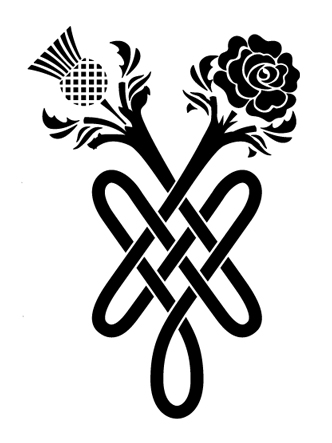
Maria married the 6th Earl of Coventry in March 1752. The noble couple went on a tour of the continent for their honeymoon, and Maria excited considerable attention everywhere she went. The new Countess of Coventry took a particular dislike to the romantic and sophisticated city of Paris. This might have been because her husband was beginning to show his controlling tendencies, and refused to allow her to wear the excessive make up that was so fashionable at the time. As the story goes, the Earl even went as far as wiping her face with his handkerchief when she appeared at a ball wearing too much rouge.
When they returned to London, Maria Gunning’s popularity had not waned, and she still had to have her own guard to keep her from being mobbed in the park. She was not immune from scandal however, and her husband became involved with the notorious courtesan Kitty Fisher. The two women were reported to have clashed over the Earl in public. An eyewitness described the exchange: ‘The other day they ran into each other in the park and Lady Coventry asked Kitty the name of the dressmaker who had made her dress. Kitty Fisher answered she had better ask Lord Coventry as he had given her the dress as a gift.” The altercation continued with Lady Coventry calling her an impertinent woman, and Kitty replying that she would have to accept this insult because Maria became her ‘social superior’ on marrying Lord Coventry, but she was going to marry a Lord herself just to be able to answer back.’
Maria was no angel either, and it was rumoured that she had an affair with the Duke of Grafton.
Despite her husband’s protestations, she continued to wear the heavy face make-up that was so fashionable during the eighteenth century. These cosmetics contained lead and arsenic, which are both highly toxic. Overuse of the toxic make up eventually caused lead poisoning, which in Maria's case proved fatal. She died on 30th September 1760 at the tragically young age of 27. The news of her death was greeted by widespread mourning and it’s said that over ten thousand people turned up to see her coffin.
Ironically, Kitty Fisher also died of lead poisoning seven years later.









 RSS Feed
RSS Feed